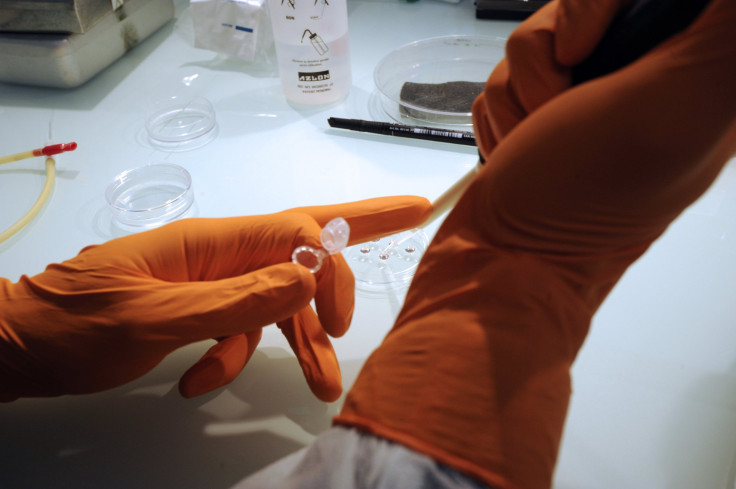Baby Born With Heart Defect Successfully Treated With Injected Stem Cells In A World First
KEY POINTS
- Finley was born with a condition known as the "transposition of the great arteries"
- The boy underwent open-heart surgery four days after his birth
- There were complications after the 12-hour procedure, and Finley's heart condition worsened
- He received stem cells "under compassionate grounds"
Two years ago, a baby boy named Finley was born in the U.K. with a heart defect. His chances of survival seemed slim, but a revolutionary treatment with injected stem cells turned his life around.
Finley was born with a condition known as the "transposition of the great arteries." In simpler terms, the two major arteries that carry blood out of his heart had swapped places.
"Everything happened so quickly after giving birth. It was such a shock to find out that Finley had a heart condition and that he needed open-heart surgery. When he was born, I was only able to hold his hand for seconds through the incubator before he was whisked away to the ambulance," Finley's mum, Melissa Hudd said, according to a statement released Tuesday by the University of Bristol in England.
The boy underwent open-heart surgery four days after his birth, to rectify the arteries' positions. Unfortunately, there were complications after the 12-hour procedure, and Finley's heart condition worsened, as per LiveScience.
"We were told to prepare from the start that the odds of him surviving without urgent surgery were not good and that the operation would be around four to six hours. After a long 12 hours, Finley finally came out of surgery, but he was reliant on a machine that took over the function of his heart and lungs," Hudd said.
Even after receiving weeks of treatment in an intensive care unit, Finley did not show any signs of progress. This is when Dr. Massimo Caputo, a professor of congenital heart surgery at Bristol Medical School, approached Finley's parents with the offer for an injection of stem cells directly into the heart.
"We nearly lost Finley when he was just two months old. Doctors called us into a room and told us they'd done everything they could. That's when Massimo came to find us and explained there was one option left – to inject stem cells into the left side of Finley's heart," Hudd continued. "He warned us that he couldn't predict what the outcome would be. But we had absolutely nothing to lose. We had to try and give Finley every possible chance to live."
This is how Finley became the first person on record to receive the revolutionary treatment. He received stem cells "under compassionate grounds," and not under a clinical trial.
Now two years later, Finley is living a life that might not have been possible without the stem cell intervention.
"We don't know what the future brings, but we are so grateful for Finley's life to be turned around after the stem cell treatment as he now has a chance at life he might not have had otherwise," Hudd said.
Congenital heart defects are the most prevalent kind of birth defect, which affects about 1% of children born in the U.S., according to the Centers for Disease Control and Prevention (CDC).
Caputo is currently developing "stem cell plaster" that can be sewn into the heart during surgery like a patch. The patch can reduce repeated open-heart surgeries needed in children with birth defects, according to the outlet.
"We are trying to create living tissue, whether it's a valve or a blood vessel or a patch, that will grow with the child, and that does not deteriorate," Caputo said in a profile published by the British Heart Foundation. "I think that would massively change their quality of life."

© Copyright IBTimes 2025. All rights reserved.





















